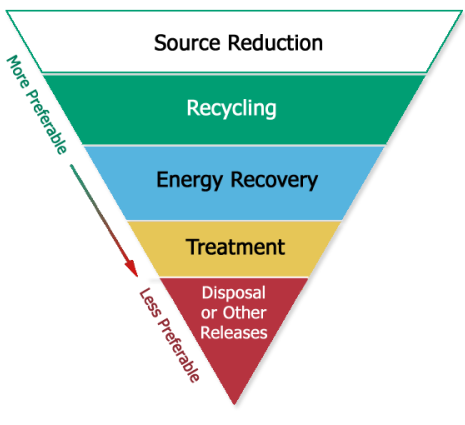TRI Pollution Prevention Overview


Since the passage of the PPA, facilities have been required to provide the following details about each chemical they report to TRI:
- A breakdown of production-related chemical waste managed (see hierarchy below)
- A production ratio or activity index to provide context for reported toxic chemical quantities
- Any newly implemented source reduction activities, reported using "W-codes" (e.g., "W41: Increased purity of raw materials")
Facilities may also provide additional information describing their source reduction, recycling, or pollution control activities. These "pollution prevention text" entries are available online dating back to 2005 for facilities that report to TRI electronically.
TRI's pollution prevention information can be accessed, analyzed, and visualized using the TRI Pollution Prevention Search.
| The Waste Management Hierarchy | |||
|---|---|---|---|
The Waste Management Hierarchy
|
The waste management hierarchy established by the PPA guides waste generators toward the best options for managing wastes. The preferred option is to prevent pollution at its source, but for waste that is generated, the preferred management methods are recycling, followed by burning for energy recovery, treatment and, as a last resort, disposing of the waste.
|
||
TRI Links
- Overview
- TRI Tools
- TRI Guides
- Contact Us
- TRI Program Home
- RSEI Program Home
